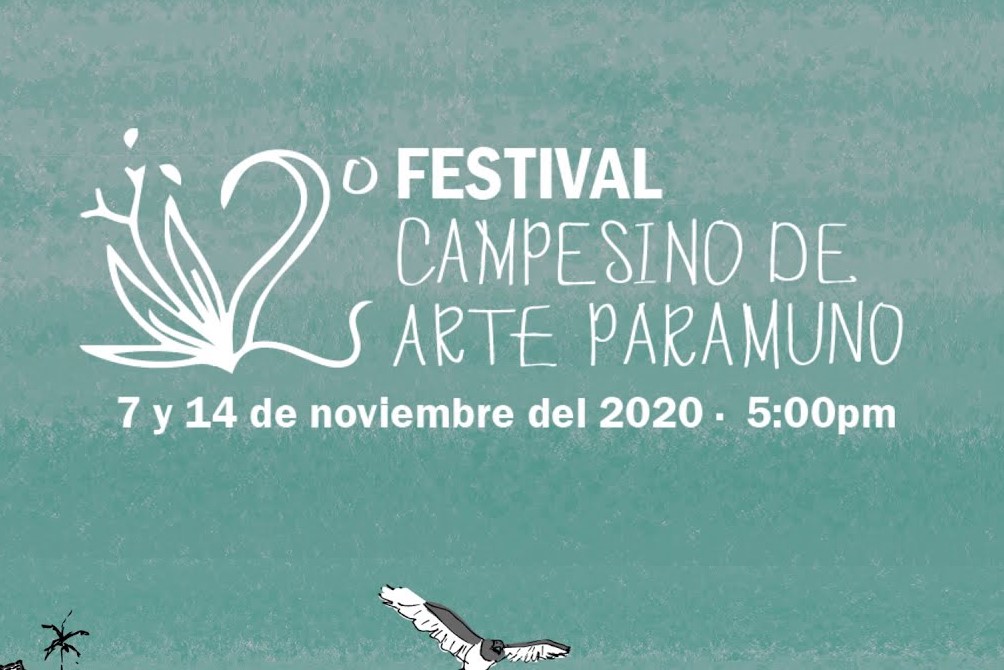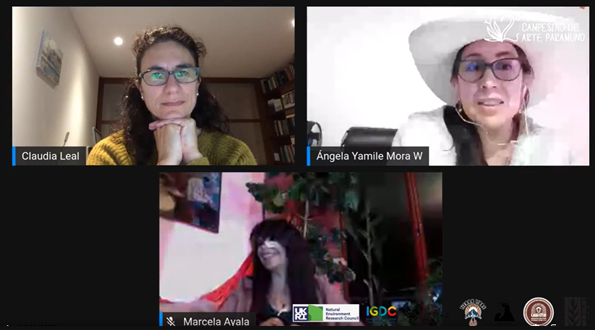Blog: Celebrating Peasant Life in the Colombian Páramos in Times of Covid-19
IGDC Research Associate, Hanne Cottyn talks about the virtual music festival held in November 2020, in a collaboration between researchers at York and at the Colombian Instituto Humboldt of the IGDC project on Colombian páramos.

By Hanne Cottyn
In November 2020, a collective of artists, researchers, and audiovisual creators organised the ‘Second Peasant Festival of Páramo Art’ (Segundo Festival Campesino de Arte Paramuno). Artists from the rural communities around Bogotá, Colombia, took the (virtual) stage and shared their knowledge, achievements and pride about being peasants in the páramos of Colombia. Páramos are neotropical high altitude ecosystems that play a key role in capturing CO2, supplying and regulating freshwater, and supporting high levels of biodiversity. But they are also the home of peasant communities who develop small-scale potato- and cattle-based livelihoods. As a local peasant leader states, being a peasant in the páramos is an art in itself. Music, poetry and theatre are daily practices through which peasants make sense of the joys and challenges of living in and with the páramos. By celebrating these forms of “páramo art,” the festival contributes not only to the visibility of peasants’ artistic expressions but also to the recognition of the –still too often overlooked- knowledge they transmit.
2° Festival Campesino de Arte Paramuno¡Hoy nos ponemos el páramo de ruana!. Campesinos, músicos, poetas, dramaturgas, académicos y otros expertos hablarán "garlaran" desde distintos puntos de vista, sobre la relación del arte, el páramo y el campesinado. Este programa está financiado conjuntamente por el Consejo de Investigación de Medio Ambiente Natural de Investigación e Innovación del Reino Unido (UKRI-NERC) y el Consejo de Investigación de Artes y Humanidades (UKRI-AHRC) a través del Fondo Newton #2FestivalCampesinodeArteParamuno #Campesinos #ArteParamuno #Sumapaz #Chingaza #PáramodeGuerrero #PáramodeGuántiva #Cocuy #PáramodelAlmorzadero #Música #Arte #Páramo #InstitutoHumboldt #RestauranteCasadeCitas #tierralibre_co #UniversityofYork #AlmanaqueAgroecológico #IGDC #NERC
Posted by Restaurante Casa de Citas on Saturday, 7 November 2020
2nd Festival Campesino de Arte Paramuno - 7 November 2020
The festival originates in a collaboration between researchers at York and at the Colombian Insituto Humboldt of the IGDC project on Colombian páramos with the collective Almanaques Agroecológicos, coordinated by geographer and historian Lina Cortés. It builds on the First Peasant Agro-ecological Festival (November 2019) and the “agroecological almanac” published on the region of Sumapaz (2020), both realizations of Almanaques Agroecológicos with support from researchers of the University of York and Instituto Humboldt. With funding from NERC, a second festival was organized together with an audiovisual production team and with the support of the Colombian collective Tierra Libre.
Due to the pandemic context, the rural communities of Sumapaz self-organized to keep the virus out. As a result, the organisation and presentation of the festival went entirely online. Although most artists live in remote communities with limited internet or phone connection, the festival managed to generate a participatory and corona-proof space with 53 artists. Together, they represent 11 different music groups, a poet and a theatre collective from the páramos of Sumapaz and Chingaza, located south and east from Bogotá respectively. Their home-made videos of songs, poetry and theatre were edited by the festival team and were screened during two Saturday evenings. The online event, streamed on Facebook, also offered a space for wider participation, with the event page reaching over 35000 people during the month of November.
The festival programme was organised along with three central themes, which were formulated as guiding questions: What is the páramo? What does it mean to be a peasant in the páramo? What is “páramo art”? We invited a number of speakers whose work relates in different ways to these topics, including historians, a biologist, a cultural manager, and representatives of Almanaques Agroecológicos and Tierra Libre. Three “garladores” or festival hosts –a peasant leader, a local social communicator, and an ethnomusicologist- guided the festival audience through the themes, presenting the performances and discussing their aesthetics and message together with the invited speakers.

Festival hosts Angela Yamile Mora and Marcela Ayala interview environmental historian Claudia Leal about her work on the Chingaza páramo.
The songs, poetry and theatre presented at the festival are an invitation to reflect upon everyday rural life in the páramos and the enchantments of páramo landscapes. Reflections ranged from warnings about climate change to celebrations of historic peasant leaders, their rural roots and local traditions. The theatre play made a strong plea for restoring our (spiritual) relation with the páramo. One artist shared knowledge about the Andean bear, while others reflected on how the pandemic disrupts rural life. “Páramo art” constitutes a source of peasant environmental knowledge and historical experiences and points to multiple ways to see, hear, and imagine the páramos. Through these artistic expressions, peasants gave presence and a voice to the páramo -in all its diversity- and allowed páramos to become the real protagonists of the festival.
The streaming and the videos of each act are still accessible on the Youtube channel of Almanaques Agroecológicos (“Paramo de Sumapaz”).
Contact us
Interdisciplinary Global Development Centre
igdc@york.ac.uk
01904 323716
Department of Politics and International Relations, University of York, Heslington, York, YO10 5DD, UK
Twitter
Contact us
Interdisciplinary Global Development Centre
igdc@york.ac.uk
01904 323716
Department of Politics and International Relations, University of York, Heslington, York, YO10 5DD, UK
Twitter